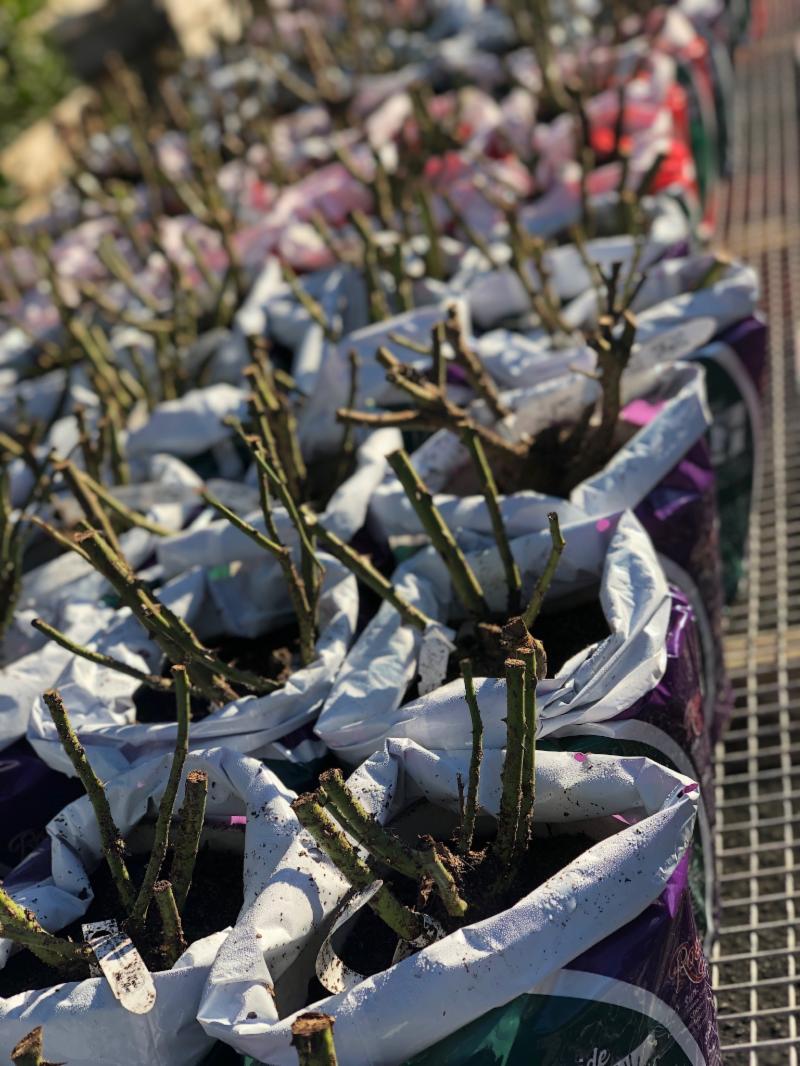Spring is just around the corner, and we are gearing up for our favorite time of year!
Our favorite time of year is almost here! Soon the nursery will be filled with the bright colors of Spring and you’ll be eager to start planting.
Here are a few tips to make sure your garden is as ready as you are when Spring arrives!
- Clear out weeds and debris
- Organize your shed and greenhouse
- Hunt down garden pests
- Prune
- Fix fences, gates, and trellis
- Set up new planters and garden beds
- Create a composting area
- Prepare your soil

Bare Root Roses & Fruit Trees are Here
What does “bare root” mean?
They are called ‘bare root’ because the dirt surrounding the roots has been removed. Bare root fruit trees and roses bushes are harvested in late fall to early winter after cooler weather has encouraged them to go dormant.
They are called ‘bare root’ because the dirt surrounding the roots has been removed. Bare root fruit trees and roses bushes are harvested in late fall to early winter after cooler weather has encouraged them to go dormant.
Why should I plant bare root roses and fruit trees?
Planting bare root roses and trees is an easy and cost-effective way to plan and grow a gorgeous rose garden and orchard.
How to Plant Bare Root Roses & Fruit Trees
Bare Root Roses & Fruit Tree Planting Tips:
- Dig a hole that’s twice the size of the root ball. This allows the roots room to grow and spread.
- Amend the soil with a good planting mix at a 50/50 ratio of mix to native soil.
- Set the plant in the hole and spread the roots evenly around it. Position the plant so that the bud union (a swelling at the base of a grafted plant where the new plant was grown on the rootstock) is 1 inch above the soil surface. We also highly recommend use of a gopher basket to keep your plant’s roots safe!
- Backfill the hole, gently pack the soil and water deeply. Leave a basin around the plant to ensure that water reaches the bottom of the roots and doesn’t run off.
- Fertilize immediately using an organic fertilizer for the best long term results.
- Don’t plant too deeply. Make sure the point on the trunk where the roots begin to flare is above the soil line.
- Most trees shouldn’t need staking if planted properly. If your plant has a particularly small root ball and/or is in a particularly windy location it may need to be staked, if only temporarily.
